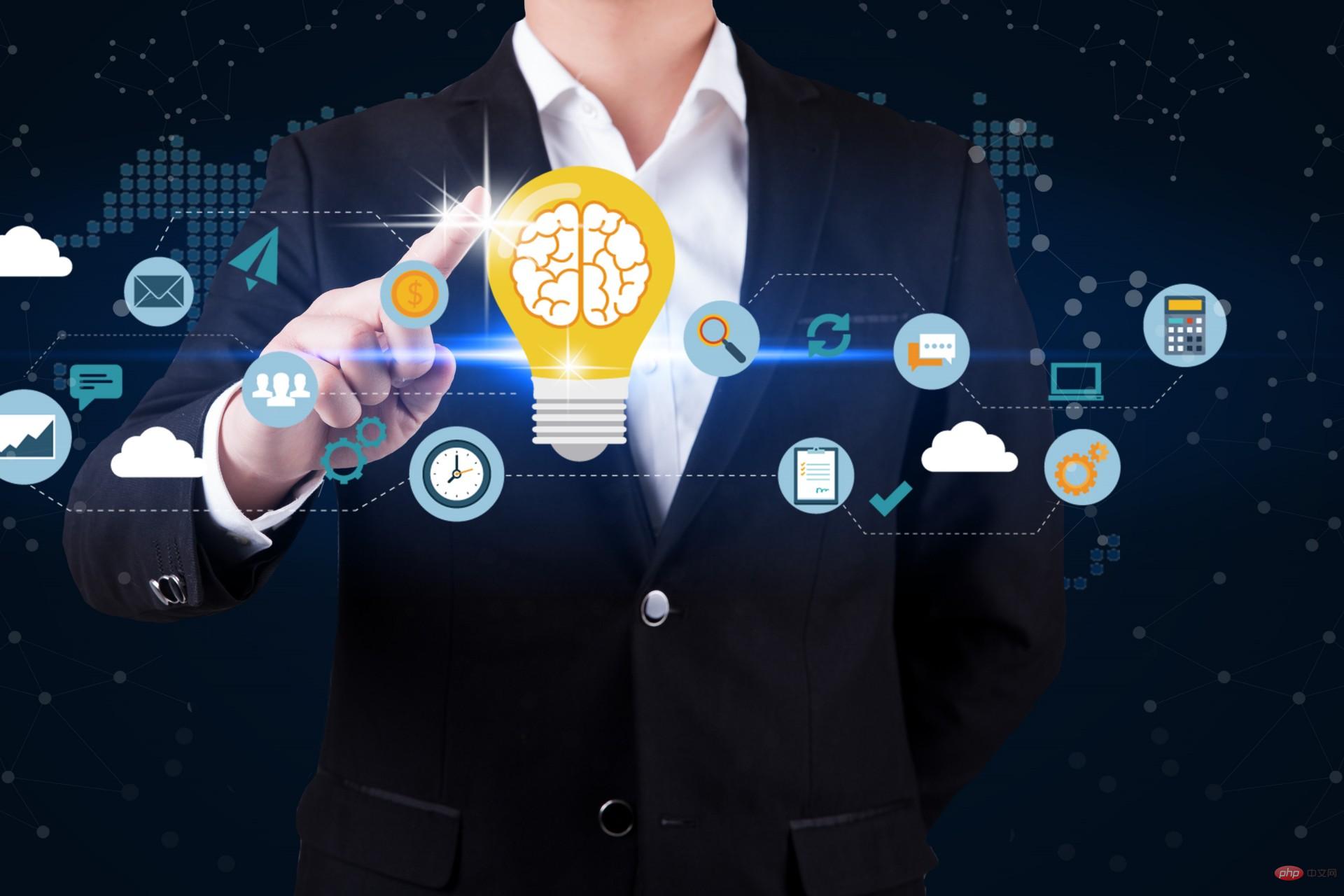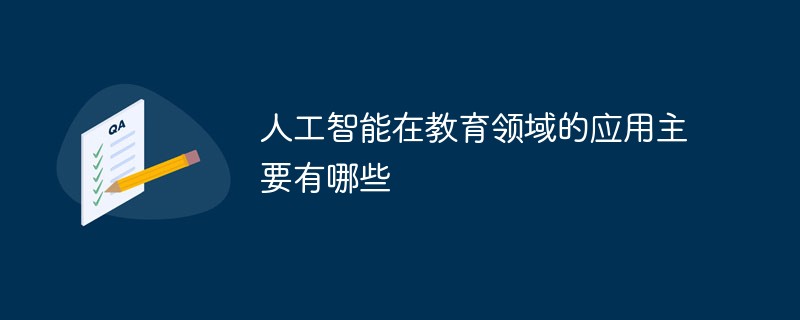 Technology peripherals
Technology peripherals AI
AI ChatGPT alternative apocalypse: the last piece of the puzzle for ordinary people to control artificial intelligence? |Titanium Space Time
ChatGPT alternative apocalypse: the last piece of the puzzle for ordinary people to control artificial intelligence? |Titanium Space Time
Write in front:
On April 14, 1980, in Los Angeles, the United States, the movie "The Kramers" won five Oscars: Best Picture, Best Director, Best Adapted Screenplay, Best Actor, and Best Supporting Actress. The grand prize, in an era of numerous masters, defeated the equally great Vietnam War epic film "Apocalypse Now". This great work seems to use its own destiny to reveal the truth of history in an allegorical way:
"There is no winner or loser in any war. The only winner is the war itself"
On November 30, 2022, in San Francisco, the United States, the American artificial intelligence research laboratory OpenAI released the artificial intelligence chat robot ChatGPT. Within 2 months, the number of users exceeded 100 million. This new generation of conversational "artificial intelligence" has become crazy around the world. Reaching 100 million users, it has become the fastest growing consumer app in history. According to the definition of "Father of Artificial Intelligence" Alan Turing: If a machine can have a conversation with humans (through telex equipment) without being able to identify its identity as a machine, then the machine is said to be intelligent. In this long-distance race between humans and artificial intelligence that spans more than 70 years, a new human revelation has surfaced:
"The world is on the eve of a new round of AI technology explosion."
How did China “miss” ChatGPT on the other side of Silicon Valley?
How can humans avoid being eliminated by ChatGPT?
When will the madness and bubble of ChatGPT and artificial intelligence burst?
BAT Who is the “number one player” in artificial intelligence in China?
What are the moral imperatives that will guide the future of artificial intelligence?
At 3 pm on June 7, 2023, Titan Time’s “Reading Moment” will bring a blockbuster live broadcast:
ChatGPT Alternative Apocalypse: The last piece of the puzzle for ordinary people to control artificial intelligence?
To find this piece of the puzzle, maybe we can start by looking back at history...
Artificial intelligence has gone through three historical development waves
► The first wave (1956-1974):
AI trend of thought gives machines logical reasoning capabilities. With the rise of the emerging concept of "artificial intelligence", people are full of imagination about the future of AI, and artificial intelligence has ushered in its first wave of development.
At this stage, artificial intelligence is mainly used to solve algebra and geometry problems, as well as learn and use English programs. Research and development mainly focuses on the logical reasoning ability of the machine.
Among them, the breakthrough development of natural language processing and human-computer dialogue technology in the 1960s greatly increased people’s expectations for artificial intelligence and brought artificial intelligence into the first wave of climax.
However, due to the lack of computer computing power at the time, and due to pressure from Congress, the US and British governments stopped allocating funds to artificial intelligence research projects without clear goals in 1973. The realization cycle of artificial intelligence R&D was lengthened and the industry was cold.
Keywords: recognition pattern, human-computer dialogue, expert system
► Second Wave (1980-1987):
Expert systems make artificial intelligence practical. The earliest expert system was the DENDRAL system developed by Feigenbaum in 1968, which could help chemists determine the molecular structure of a specific substance; DENDRAL proposed the definition of a knowledge base for the first time and also paved the way for the second wave of AI development.
Since the 1980s, "expert system" AI programs in specific fields have been more widely adopted. This system can deduce answers to professional questions based on professional knowledge in the field, and AI has thus become more "practical." ”, the knowledge base system and knowledge engineering on which the expert system relied became the main research directions at that time. However, the practicality of expert systems is limited to specific fields. At the same time, upgrades are difficult and maintenance costs remain high. The development of the industry has once again encountered bottlenecks.
The failure of the artificial intelligence DARPA project in 1990 announced that the second wave of AI had entered its trough. However, the proposal of BP neural network at the same time laid the foundation for subsequent machine perception and interaction capabilities.
Keywords: frame theory, computer vision, computer neurology, BP algorithm, behavioral robot
► The third wave (1993 to present):
Deep learning helps perceptual intelligence mature. The ever-increasing computing power of computers has accelerated the iteration of artificial intelligence technology and pushed perceptual intelligence into a mature stage. AI is combined with multiple application scenarios and the industry is revitalized.
The proposal of the deep learning algorithm in 2006 and AlexNet's major breakthrough in image recognition accuracy on the ImageNet training set in 2012 directly promoted a new wave of artificial intelligence development.
In 2016, artificial intelligence once again gained unprecedented attention after AlphaGo defeated professional Go players. From the perspective of technological development, in the first two waves, the logical reasoning capabilities of artificial intelligence continued to increase, computational intelligence gradually matured, and intelligent capabilities expanded from computing to perception.
Currently, the capabilities of perception technologies such as speech recognition, speech synthesis, and machine translation are approaching human intelligence.
Keywords: transfer learning, autonomous driving, generative adversarial network, unsupervised deep learning, large language model
Titanium Media & Titanium Time, together with the asynchronous community of People’s Posts and Telecommunications Press, launched an in-depth peak dialogue on the new round of AI technology development, paying in-depth attention to the development trends and business changes in the AI field. In specific The key nodes in the development process of artificial intelligence, trying to reveal with many industry practitioners and participants: the last piece of the puzzle for ordinary people to master artificial intelligence.
Introducing important guests

Stuart Russell
In 1962, a British man, Ph.D. in Computer Science from Oxford University Physics and Stanford University, author of "Artificial Intelligence: A Modern Approach", was the first to publish a signed article with Hawking and others calling on everyone to be wary of people who may see threats to us through artificial intelligence. , Vice Chairman of the Artificial Intelligence and Robotics Committee of the World Economic Forum, University of California, Berkeley, where he serves as a professor in the Department of Computer Science and served as department chair and director of the Center for Human-Compatible Artificial Intelligence.

Nico Lee
Partner of TMTpost Media Group, president of ChainDD, a well-known blockchain media data platform under TMTpost Media Group, author of "100 Questions on Blockchain: Understanding Blockchain in Simple and Easy Ways", and the author of the representative article "Shenzhen The Mystery of the Sudden Death of Sailong Company", "36 Krypton Equity Crowdfunding Platform Fell into Fraud", "36 Krypton Fell into Fraud Again, Is China's Equity Crowdfunding Coming to an End?", "Investigation of Jia Yueting and Faraday Future's Assets in the United States", Major reports such as "OKEX's Suspected Illegal Futures Trading Insider" shocked the industry and even the country.
Introduction to important works

In 1995, "Artificial Intelligence: A Modern Approach" was created and is known as the "standard textbook in the field of artificial intelligence."
This book comprehensively and in-depth explores the theory and practice in the field of artificial intelligence (AI). In a unified style, it integrates today's popular artificial intelligence ideas and terminology into applications that have attracted widespread attention, truly integrating theory and practice. Combine.
The book is divided into 7 parts, with a total of 28 chapters. The theoretical part introduces the main theories and methods of artificial intelligence research and traces related ideas from more than 2,000 years ago. The content mainly includes logic, probability and continuous mathematics, perception, and reasoning. , learning and action, fairness, trust, social welfare and safety; the practical part perfectly implements the "modern" concept, and the practical application chooses the currently popular microelectronic equipment, robotic planetary detectors, and online platforms with billions of users Services, AlphaZero, humanoid robots, autonomous driving, artificial intelligence-assisted medical care, etc.
At present, the book has been updated and released on the original basis. A large amount of the fourth edition contains new content or has been rewritten to adapt to new changes in the field of artificial intelligence and present a more unified picture of the field of artificial intelligence. The whole book covers in-depth New achievements in learning and other aspects, as well as new developments in the field of artificial intelligence in the past ten years.
Ti Kong Time|Reading Time
"Ti Kong Time|Reading Time" live broadcast room—— is a special reading column of Titanium Time.
Books can be used as a measure of time, as an inscription of a place, as a footnote to a character. Every detailed reading, every exchange of thoughts that runs through the pages of the book, can produce a magical spirit in the titanium space. Power and resonance.
This is the spiritual place for emerging entrepreneurs and a new generation of innovators. Reading, knowledge, and culture are used as links to connect each unique individual and deconstruct the thinking trajectory of each unique soul.
Reading a new book together, you can get a glimpse of the future world from any angle
Reading an old book together, no matter how long it takes, you can find the beauty of human history
We try to explore the essence of the event through dialogue, while listening to the most cutting-edge ideas, while seeking ways to make progress together with them!
Welcome to scan the QR code below to follow Titan Time
More exciting things not to be missed
Lock the live broadcast room to participate in interaction and enjoy the benefits of the live broadcast room
Ti empty time
Titanium Time is a knowledge sharing platform under Titanium Media Group that focuses on pan-finance and new business. It is committed to building independent thinking that spans classics and cutting-edge, redrawing the spiritual map of a new generation of entrepreneurs and innovators, and creating An exclusive thinking space for "traveling through cycles with cognition".
Click to read Dr. Kuan’s recommended book list for the year!

The above is the detailed content of ChatGPT alternative apocalypse: the last piece of the puzzle for ordinary people to control artificial intelligence? |Titanium Space Time. For more information, please follow other related articles on the PHP Chinese website!
 2023年机器学习的十大概念和技术Apr 04, 2023 pm 12:30 PM
2023年机器学习的十大概念和技术Apr 04, 2023 pm 12:30 PM机器学习是一个不断发展的学科,一直在创造新的想法和技术。本文罗列了2023年机器学习的十大概念和技术。 本文罗列了2023年机器学习的十大概念和技术。2023年机器学习的十大概念和技术是一个教计算机从数据中学习的过程,无需明确的编程。机器学习是一个不断发展的学科,一直在创造新的想法和技术。为了保持领先,数据科学家应该关注其中一些网站,以跟上最新的发展。这将有助于了解机器学习中的技术如何在实践中使用,并为自己的业务或工作领域中的可能应用提供想法。2023年机器学习的十大概念和技术:1. 深度神经网
 超参数优化比较之网格搜索、随机搜索和贝叶斯优化Apr 04, 2023 pm 12:05 PM
超参数优化比较之网格搜索、随机搜索和贝叶斯优化Apr 04, 2023 pm 12:05 PM本文将详细介绍用来提高机器学习效果的最常见的超参数优化方法。 译者 | 朱先忠审校 | 孙淑娟简介通常,在尝试改进机器学习模型时,人们首先想到的解决方案是添加更多的训练数据。额外的数据通常是有帮助(在某些情况下除外)的,但生成高质量的数据可能非常昂贵。通过使用现有数据获得最佳模型性能,超参数优化可以节省我们的时间和资源。顾名思义,超参数优化是为机器学习模型确定最佳超参数组合以满足优化函数(即,给定研究中的数据集,最大化模型的性能)的过程。换句话说,每个模型都会提供多个有关选项的调整“按钮
 人工智能自动获取知识和技能,实现自我完善的过程是什么Aug 24, 2022 am 11:57 AM
人工智能自动获取知识和技能,实现自我完善的过程是什么Aug 24, 2022 am 11:57 AM实现自我完善的过程是“机器学习”。机器学习是人工智能核心,是使计算机具有智能的根本途径;它使计算机能模拟人的学习行为,自动地通过学习来获取知识和技能,不断改善性能,实现自我完善。机器学习主要研究三方面问题:1、学习机理,人类获取知识、技能和抽象概念的天赋能力;2、学习方法,对生物学习机理进行简化的基础上,用计算的方法进行再现;3、学习系统,能够在一定程度上实现机器学习的系统。
 得益于OpenAI技术,微软必应的搜索流量超过谷歌Mar 31, 2023 pm 10:38 PM
得益于OpenAI技术,微软必应的搜索流量超过谷歌Mar 31, 2023 pm 10:38 PM截至3月20日的数据显示,自微软2月7日推出其人工智能版本以来,必应搜索引擎的页面访问量增加了15.8%,而Alphabet旗下的谷歌搜索引擎则下降了近1%。 3月23日消息,外媒报道称,分析公司Similarweb的数据显示,在整合了OpenAI的技术后,微软旗下的必应在页面访问量方面实现了更多的增长。截至3月20日的数据显示,自微软2月7日推出其人工智能版本以来,必应搜索引擎的页面访问量增加了15.8%,而Alphabet旗下的谷歌搜索引擎则下降了近1%。这些数据是微软在与谷歌争夺生
 荣耀的人工智能助手叫什么名字Sep 06, 2022 pm 03:31 PM
荣耀的人工智能助手叫什么名字Sep 06, 2022 pm 03:31 PM荣耀的人工智能助手叫“YOYO”,也即悠悠;YOYO除了能够实现语音操控等基本功能之外,还拥有智慧视觉、智慧识屏、情景智能、智慧搜索等功能,可以在系统设置页面中的智慧助手里进行相关的设置。
 30行Python代码就可以调用ChatGPT API总结论文的主要内容Apr 04, 2023 pm 12:05 PM
30行Python代码就可以调用ChatGPT API总结论文的主要内容Apr 04, 2023 pm 12:05 PM阅读论文可以说是我们的日常工作之一,论文的数量太多,我们如何快速阅读归纳呢?自从ChatGPT出现以后,有很多阅读论文的服务可以使用。其实使用ChatGPT API非常简单,我们只用30行python代码就可以在本地搭建一个自己的应用。 阅读论文可以说是我们的日常工作之一,论文的数量太多,我们如何快速阅读归纳呢?自从ChatGPT出现以后,有很多阅读论文的服务可以使用。其实使用ChatGPT API非常简单,我们只用30行python代码就可以在本地搭建一个自己的应用。使用 Python 和 C
 人工智能在教育领域的应用主要有哪些Dec 14, 2020 pm 05:08 PM
人工智能在教育领域的应用主要有哪些Dec 14, 2020 pm 05:08 PM人工智能在教育领域的应用主要有个性化学习、虚拟导师、教育机器人和场景式教育。人工智能在教育领域的应用目前还处于早期探索阶段,但是潜力却是巨大的。
 人工智能在生活中的应用有哪些Jul 20, 2022 pm 04:47 PM
人工智能在生活中的应用有哪些Jul 20, 2022 pm 04:47 PM人工智能在生活中的应用有:1、虚拟个人助理,使用者可通过声控、文字输入的方式,来完成一些日常生活的小事;2、语音评测,利用云计算技术,将自动口语评测服务放在云端,并开放API接口供客户远程使用;3、无人汽车,主要依靠车内的以计算机系统为主的智能驾驶仪来实现无人驾驶的目标;4、天气预测,通过手机GPRS系统,定位到用户所处的位置,在利用算法,对覆盖全国的雷达图进行数据分析并预测。


Hot AI Tools

Undresser.AI Undress
AI-powered app for creating realistic nude photos

AI Clothes Remover
Online AI tool for removing clothes from photos.

Undress AI Tool
Undress images for free

Clothoff.io
AI clothes remover

AI Hentai Generator
Generate AI Hentai for free.

Hot Article

Hot Tools

SecLists
SecLists is the ultimate security tester's companion. It is a collection of various types of lists that are frequently used during security assessments, all in one place. SecLists helps make security testing more efficient and productive by conveniently providing all the lists a security tester might need. List types include usernames, passwords, URLs, fuzzing payloads, sensitive data patterns, web shells, and more. The tester can simply pull this repository onto a new test machine and he will have access to every type of list he needs.

EditPlus Chinese cracked version
Small size, syntax highlighting, does not support code prompt function

SAP NetWeaver Server Adapter for Eclipse
Integrate Eclipse with SAP NetWeaver application server.

Atom editor mac version download
The most popular open source editor

PhpStorm Mac version
The latest (2018.2.1) professional PHP integrated development tool




